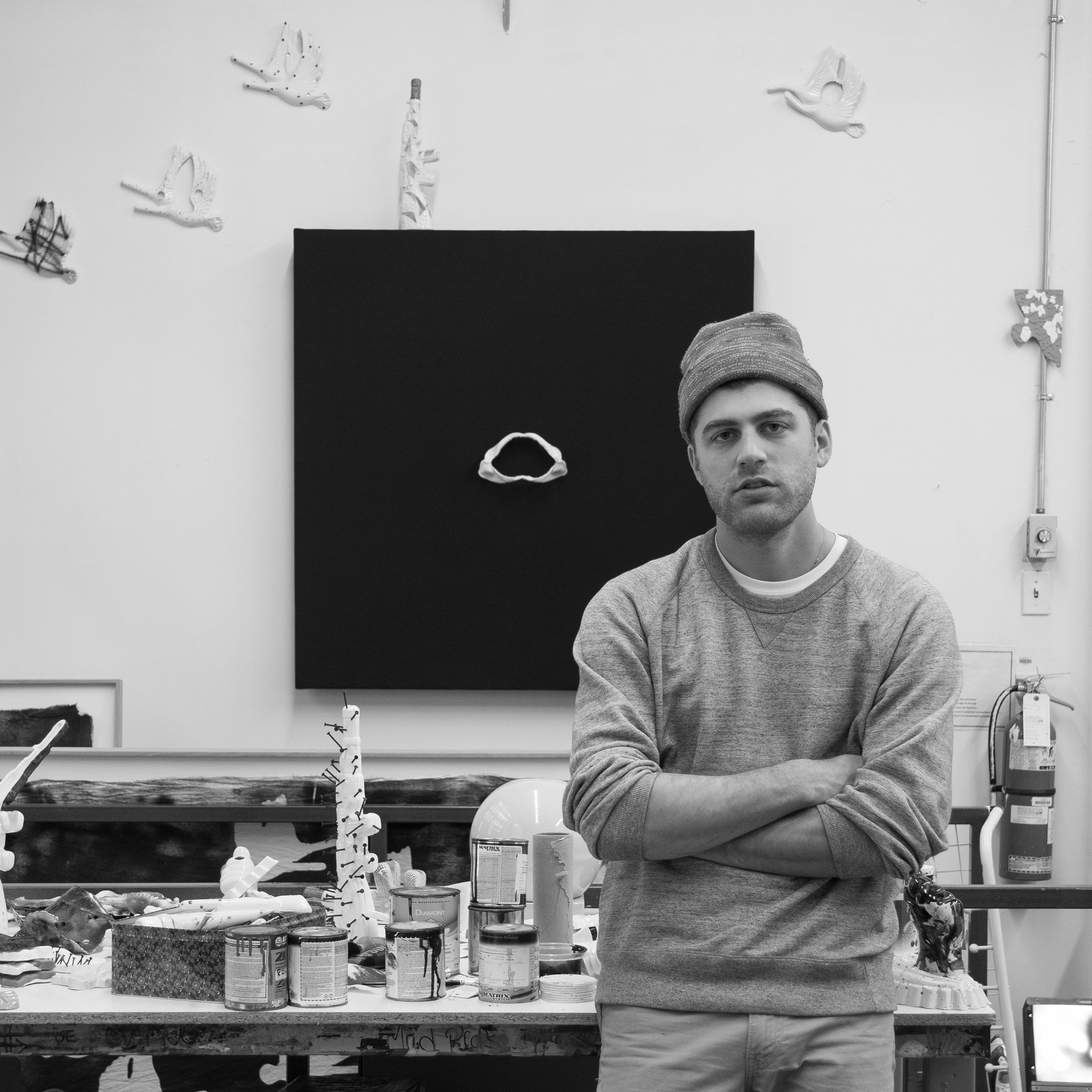Statement:
The matrix process is central to the creation of my works. But while the specificity of this approach is usually the creation of the same, I use it rather as a starting point; it is the resistance to this matrix by the creation of distinct individuals that interests me. This is why my work is mainly done in ceramics. The clay has a memory, but also a power, a possibility and a will to go beyond the mold. Indeed, once the object is unmolded, it remains malleable which allows me to modify it and give it the unique existence it ask for. Thus, like all living beings, my forms derive their existence from the same source as their peers. My job is to listen to the piece and give it the tools to become what it wants to be. The freedom of the work (and being) lies in the expression and exploitation of this possibility of singularization.
For the installation, I organize single piece to suggest a landscape or a flock. This accentuates the peculiar singularity of each piece by allowing it to be compared to its neighbor. My goal is to offer offers an immersive organic and organized world. The composition is analogous to that of a symphony in which the physical works replace the musical notes. By this, I propose a nature of human creature, both in the indivudual that compose this nature and by the by the organization that governs them.
This is how my work proposes a double reading of the concept of human nature. It is by addressing this one both as a specificity of the human and as nature that would be of human creation, that my work questions and testifies of our particular yet common situation to the objects of the world.
Finally, it is essential that my works be distributed and continue to exist in people's homes. Art must replace the meaningless trinket and compete with it by using its techniques. In this world, artistic value and economic value collide and expose their incompatibility. By selling them at nominal and derisory prices for works like $ 19.99 or even 25 cents for the content of the candy box (ceramic fragments) of the exhibition Pingo, my approach is a comment, a criticism and an action on the art market, the accessibility of works and the need for food to surround them.
![]()
“Really, this interested me, but it still is to little! I’d like more, wayyy mooore !“
The matrix process is central to the creation of my works. But while the specificity of this approach is usually the creation of the same, I use it rather as a starting point; it is the resistance to this matrix by the creation of distinct individuals that interests me. This is why my work is mainly done in ceramics. The clay has a memory, but also a power, a possibility and a will to go beyond the mold. Indeed, once the object is unmolded, it remains malleable which allows me to modify it and give it the unique existence it ask for. Thus, like all living beings, my forms derive their existence from the same source as their peers. My job is to listen to the piece and give it the tools to become what it wants to be. The freedom of the work (and being) lies in the expression and exploitation of this possibility of singularization.
For the installation, I organize single piece to suggest a landscape or a flock. This accentuates the peculiar singularity of each piece by allowing it to be compared to its neighbor. My goal is to offer offers an immersive organic and organized world. The composition is analogous to that of a symphony in which the physical works replace the musical notes. By this, I propose a nature of human creature, both in the indivudual that compose this nature and by the by the organization that governs them.
This is how my work proposes a double reading of the concept of human nature. It is by addressing this one both as a specificity of the human and as nature that would be of human creation, that my work questions and testifies of our particular yet common situation to the objects of the world.
Finally, it is essential that my works be distributed and continue to exist in people's homes. Art must replace the meaningless trinket and compete with it by using its techniques. In this world, artistic value and economic value collide and expose their incompatibility. By selling them at nominal and derisory prices for works like $ 19.99 or even 25 cents for the content of the candy box (ceramic fragments) of the exhibition Pingo, my approach is a comment, a criticism and an action on the art market, the accessibility of works and the need for food to surround them.

“Really, this interested me, but it still is to little! I’d like more, wayyy mooore !“